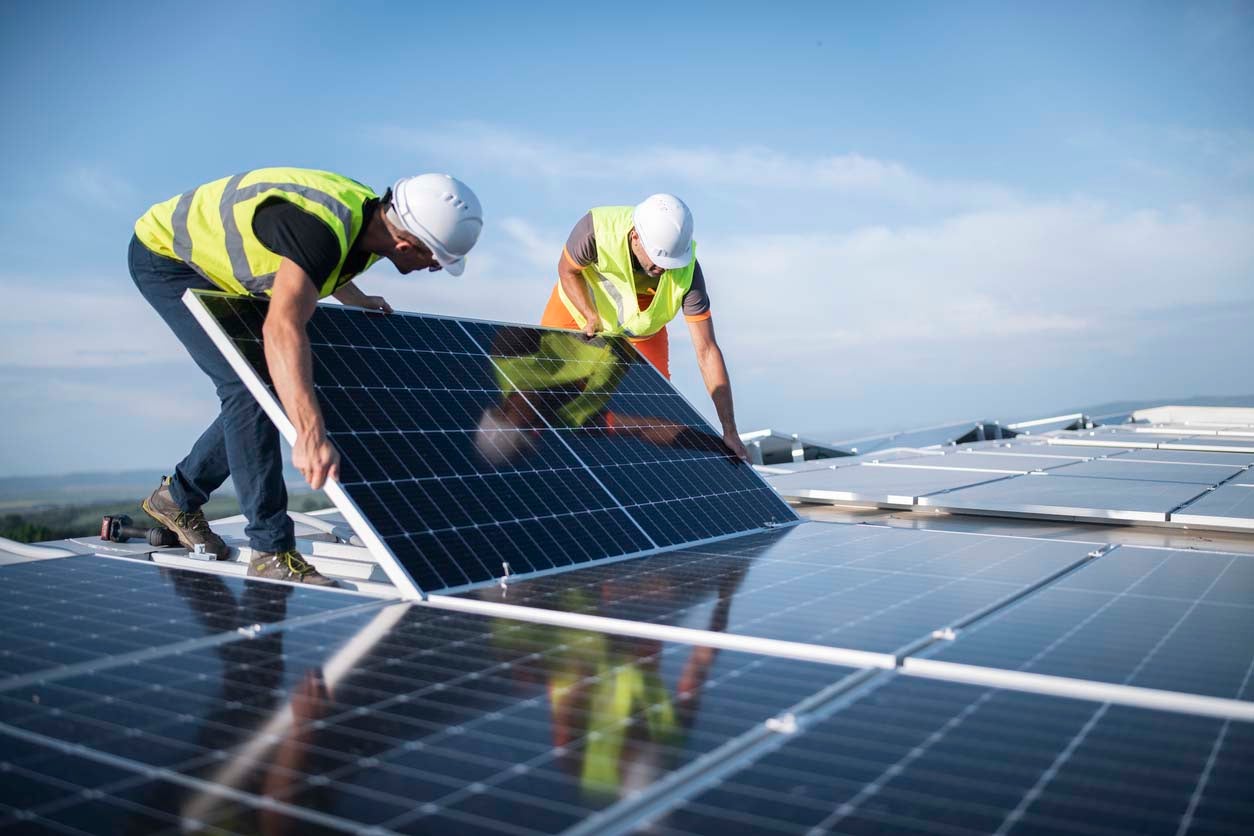The 15-Second Trick For Solar Panel Company
Commercial Solar Panels PA: Our Company Focuses On The Setup And Management Of Photovoltaic Energy Systems
History and Development of Solar Panel Business
The creation of solar panel companies can be traced back to the 1800s when Alexandre Edmond Becquerel discovered the photovoltaic result. Would he have envisioned how his discovery would change the way we harness energy?
Early Beginnings

In 1954, Bell Labs developed the very first useful photovoltaic cell. This marked a substantial milestone in the history of solar power. They were initially utilized to power space satellites, however who knew this was simply the start?
Development and Growth
- In the 1970s, an energy crisis caused increased interest in renewable resource sources, including solar power.
- By the 1990s, advancements in technology and increasing environmental awareness led to the growth of solar panel business globally.
A New Age
As we got in the 21st century, the solar industry saw a rapid growth. The demand for tidy and renewable resource brought about a brand-new era in the photovoltaic panel market.
Interesting Facts
- The world's very first solar power station was constructed in 1982 in Hisperia, California.
- By 2019, solar power had ended up being the world's fastest-growing source of power.
The journey of solar panel business has been exceptional, hasn't it? The future holds immense potential, with continuous developments paving the method for a sustainable future. Can we envision a world powered entirely by solar energy?
Progressing
Today, solar panel companies continue to innovate, making every effort for more effective and economical options. The development of solar energy has come a long way, and yet, the journey has simply started.
The Core of Solar Panel Production
Ever wonder what goes into producing those glossy, sun-loving photovoltaic panels? The procedure is as outstanding as completion product (Top Rated Solar Installers PA). High-purity silicon, the primary active ingredient in solar panels, goes through different improvements to guarantee its performance and resilience
From Sand to Silicon
Crystalline silicon, the backbone of a lot of photovoltaic panels, stems from easy sand. It's an interesting journey, isn't it? The sand goes through a high-temperature response with carbon to form silicon. This isn't just any silicon. The silicon utilized in photovoltaic panels is "solar-grade," with a pureness of 99.9999%. It's this purity that allows the panels to effectively transform sunlight into power.
Ingot Development
When the silicon is pure enough, it's time to form ingots. Picture a big, round block of strong silicon. How is this attained? Through a process called Czochralski process, where the silicon is melted and after that gradually recrystallized. It's a slow dance of science, resulting in a strong item that is nearly as pure as the raw silicon itself.
Slicing into Wafers
The ingots are then sliced into wafer-thin pieces, like slicing a loaf of bread. Each slice is a potential solar cell, waiting to harness the power of the sun. Did you know that the silicon wafers are just about 200 micrometers thick? That has to do with half the thickness of a human hair! The process needs accuracy and patience, but the outcome is a set of wafers all set to be developed into solar batteries.
Producing Solar Cells
With the wafer ready, it's time for the magic to occur. The silicon wafer is 'doped' with other elements like phosphorous and boron to develop an internal electric field. It's this field that enables the conversion of sunlight into electricity. Complex, isn't it?
Assembly and Quality Control
Solar battery resemble puzzle pieces that come together to form a photovoltaic panel. The cells are soldered together in a grid-like pattern, then covered with a protective layer of glass. The last action involves extensive quality control checks. It's necessary that every solar panel carries out at its peak, would not you agree?
Expert Idea
Always keep in mind that even the most efficiently manufactured solar panel can lose performance due to dirt and particles accumulation. Routine cleansing can considerably improve your panels' performance.
Understanding the Ecological Impact of Photovoltaic Panel Business
Ever contemplated the ecological footprint of a solar panel company? Green technology, such as solar, has transformed our energy landscape, however what about the behind-the-scenes effect?
The Manufacturing Process: A Double-Edged Sword
The manufacturing procedure for photovoltaic panels demands a considerable quantity of energy. This process, called 'em bodied energy', can be viewed as a type of 'energy debt'. It's a little like borrowing today's sunshine to power tomorrow's energy needs. Worry not, the energy payback time is frequently much shorter than you 'd think!
- The energy payback duration for photovoltaic panels is usually 1-4 years.
- After this duration, the energy produced is essentially carbon-free.

Life After Decommission
And what occurs when a solar panel reaches completion of its life-span? Can it simply be tossed into the garbage? No, that wouldn't be really green, now, would it?
A feasible service is recycling. While photovoltaic panel recycling is still in its infancy, it holds a world of capacity. Recycling not just keeps products out of land fills however also reduces the need for brand-new raw materials.
Responsible Sourcing: More Than A Buzzword
Where does the silicon come from, you ask? Unfortunately, the market's need for silicon and unusual minerals can cause devastating mining practices. Accountable sourcing is therefore important to lower hazardous environmental impacts.
Minimized Carbon Emissions: The Bigger Image
Let's not forget the larger image: solar energy significantly lowers carbon emissions. When installed, solar panels produce tidy, renewable resource, offsetting their preliminary manufacturing footprint.
Simply put, the environmental impact of photovoltaic panel companies is a complex problem. With accountable practices, the pledge of a cleaner, greener future is well within our grasp.
Financial Efficiency and Market Share of Photovoltaic Panel Companies
Ever questioned why some solar panel business - Top Rated Solar Installers PA outperform others in the market? What sets them apart? The crucial lies in their financial efficiency and market share
Financial Performance: A Critical Indicator
Financial performance plays a critical role in the success of any service. For photovoltaic panel companies, it's no various. Strong monetary performance allows these business to purchase advanced innovation, research, and development, therefore creating premium, effective photovoltaic panels.
How do they accomplish this? With a concentrate on expense performance and tactical investments. Companies that handle to minimize production expenses without jeopardizing on quality tend to fare much better in the market.
Market Share: A Measure of Success
Market share, on the other hand, is a direct reflection of a business's appeal among customers. A high market share suggests more property owners are choosing their solar panels over rivals.
What's the secret dish for getting a larger market share? It comes down to consumer satisfaction and brand reputation. Companies that prioritize consumer needs and keep a positive brand image are most likely to catch a bigger share of the market.
- Consumer Satisfaction: Photovoltaic panel companies that provide dependable items and extraordinary customer support tend to have greater client complete satisfaction rates.
- Brand Reputation: A strong brand track record is built over time through constant shipment of quality items and services.
Financial Efficiency and Market Share: The Cooperative Relationship
Interestingly, the relationship between monetary efficiency and market share is not one-sided. They feed off each other. A strong monetary efficiency can increase a business's market share, while a high market share can improve financial performance.
As a photovoltaic panel company, balancing these two aspects is vital for long-lasting success. A company that neglects either of them might discover it challenging to keep its position in the competitive solar industry.
The Takeaway
So, what does all this mean for you? Whether you're a property owner looking to install solar panels or an investor considering the solar industry, understanding the monetary efficiency and market share of solar panel business is vital. They are key indications of a company's health and potential for future growth.